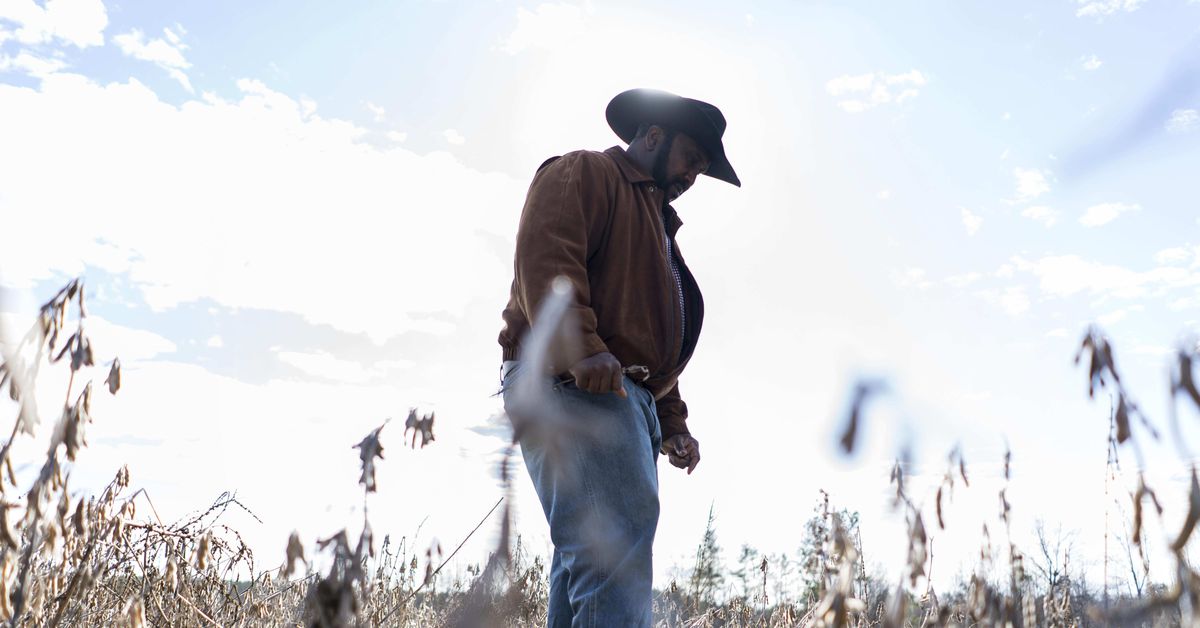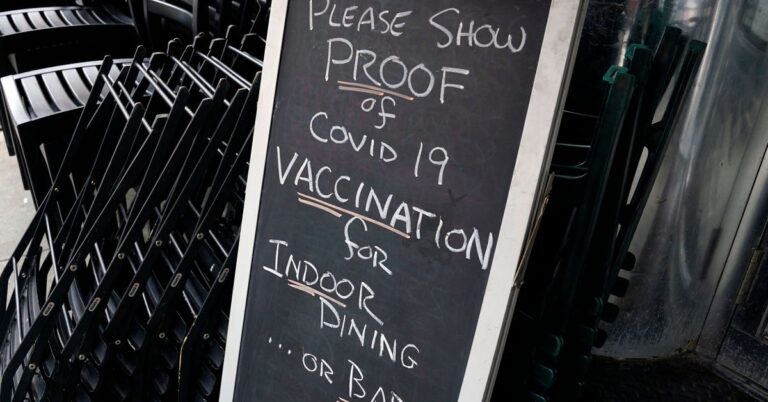Black Farmers Still Await Debt Relief as Lawsuits Block Promised Aid
This story was originally published on Civil Eats.
It was supposed to be the beginning of a new era for Black farmers. After the 2020 election, the Biden administration and a new Democratic majority in Congress promised to rectify the results of years of discrimination and systemic racism, and incoming Secretary of Agriculture Tom Vilsack and House Agriculture Committee Chair David Scott identified justice for Black farmers as a top priority. But their biggest push to correct historic wrongs — $4 billion in direct debt relief payments authorized in the American Rescue Plan — was stymied by lawsuits from white farmers before any checks were cut.
Now, the outcomes of these cases — particularly Miller v. Vilsack, the most influential of multiple lawsuits brought by white farmers to prevent the U.S. Department of Agriculture (USDA) from distributing debt relief to Black farmers — could have widespread negative consequences for any government efforts aimed at addressing historic inequities.
“It’s not an exaggeration to say that whether or not there are Black farmers in America could depend on this case,” said Mark Rosenbaum, an attorney for pro bono law firm Public Counsel who is representing the Federation of Southern Cooperatives in a new attempt to affect the outcome of Miller.
After all, the ranks of Black farmers have declined precipitously over the last century. In 1920, 14 percent of the farmers in America were Black; by 2017, that number had shrunk to less than 2 percent, with about 45,500 Black farmers remaining. Throughout the past century, Black farmers have documented extensive discrimination in accessing USDA loans and other support programs and sought recompense through a high-profile class action lawsuit and other channels. But it appears that little has changed for farmers on the ground; a Politico analysis found that in 2020, the agency approved farm loans for just 37 percent of Black applicants and 71 percent of white applicants.
Still, with no way to determine what that outcome will be or how long the court battles will drag on, Congress and the Biden administration have turned to other programs to give Black farmers a leg up, including an alternative approach to debt relief, a USDA equity commission, and investments in new programs for underserved producers. Many of these efforts use language that avoids targeting groups by race. People on the front lines of the fight for justice for Black farmers say those efforts are meaningful but question whether they can collectively turn the tide, and whether the lawsuits could halt momentum toward explicit acknowledgements of racial discrimination in agriculture.
Alternative Paths for Relief
In October, lawmakers revealed a provision now included in the Build Back Better Act that would provide $6 billion for full and partial debt forgiveness on direct loans to underserved farmers, identified as “limited-resource” or “economically distressed,” with no mention of race. It also allows farmers who have experienced past USDA discrimination to apply for additional assistance up to $500,000.
Advocates say many of the Black farmers seeking debt relief would qualify, and most groups representing their interests, including the Federation, are supportive of the measure. “It’s a much more inclusive definition, but it would still get at the debt relief [to] our farmers writ large,” said Savi Horne, executive director of the North Carolina Association of Black Lawyers Land Loss Prevention Project, which works to help Black farmers retain ownership of their land and was one of the organizations that led the June amicus brief.
On November 19, the House narrowly passed the Build Back Better Act, but it is unclear whether Democratic lawmakers will get it through the Senate and how it might be reshaped in the process. If it does make it to the president’s desk, said Dania Davy, director of land retention and advocacy at the Federation, she’s concerned that the new debt relief program will replace — instead of supplement — the more targeted help for Black farmers.
:no_upscale()/cdn.vox-cdn.com/uploads/chorus_asset/file/23057055/1346643302.jpg)
:no_upscale()/cdn.vox-cdn.com/uploads/chorus_asset/file/23057057/1346643582.jpg)
“Without a specific racial equity lens, our country runs the risk of maintaining the status quo, which has not been adequately addressed by our laws or our courts to date,” Davy said.
During a discussion on debt cancellation hosted by the Food Law and Policy Clinic at Harvard Law School this week, multiple panelists echoed that point. “You can’t effectively address racial discrimination without using racial language,” said Keisha Stokes-Hough, a senior supervising attorney at the Southern Poverty Law Center. But as a result of the lawsuits, advocates have no choice but to try.
At the same time, Davy says she’s encouraged by mounting evidence that the USDA is operating with a new racial equity focus.
A spokesperson for the USDA said equity is a primary focus at the agency under Vilsack. She provided a five-page document detailing “core actions” the agency has taken so far to address racial justice and equity, including appointing a diverse leadership team.
“Under the Biden Administration, USDA is serious about our efforts to dismantle barriers that historically underserved communities have faced in accessing USDA programs and services. For generations, entrenched disparities in our society and economy — at times facilitated by USDA — have made it harder for people of color to have a fair shot at the American dream,” USDA press secretary Kate Waters told Civil Eats in an email. “USDA will continue to make investments to advance equity throughout the department to help rebuild our economy and our social safety net so all people can thrive.”
The agency rolled out the Heirs’ Property Relending Program in July with $67 million in funding to help farmers establish permanent legal ownership of land caught up in succession challenges related to heirs’ property. Those farmers are primarily African American, since years of racist policies and actions after emancipation prevented many landowners from accessing the legal system, and often had to pass along their land without wills or estate plans in place. One conservative estimate found that there are more than 1.6 million acres of heirs’ property in the Black Belt that stretches across the South, with a value of $6.6 billion.
“It’s the first time since the founding of the USDA that these heirs’ property farmers are getting their foot in the door,” Horne said. She predicted that many will likely benefit in states like Georgia and Virginia, but due to a difference in state laws, farmers in North Carolina and other states like it are unlikely to qualify.
In August, the agency announced that it had also increased enrollment of “historically underrepresented producers” in the second round of farmer pandemic relief by 14 percent since April. In its first iteration (distributed through October 2020), 97 percent of the $9.2 billion in the Coronavirus Food Assistance Program (CFAP) went to white farmers.
And this fall, additional programs have been funded at a quick clip. The USDA invested $50 million in Racial Justice and Equity Conservation Cooperative Agreements that will support producers who have historically faced barriers to accessing USDA’s conservation assistance programs in implementing climate-smart agriculture and forestry projects. It put $4.7 million into expanding access to Farm Service Agency programs and financial services, including pandemic-related assistance, among underserved producers. And the day before Thanksgiving, the agency announced the disbursement of $75 million in funds from the American Rescue Plan to 20 organizations helping connect underserved producers with USDA programs, including the Federation of Southern Cooperatives, the National Black Farmers Association, and the National Black Growers Council.
In September, the agency also followed up on President Biden’s January executive order by starting the process of forming its first Equity Commission. The Commission will be made up of 15 members with varied backgrounds — including representatives of community-based organizations and an individual with civil rights expertise — and nominations were due by the end of November. According to the Federal Register, the agency expects the Commission to begin meeting sometime this winter.
During the Harvard Law event, Tracy Lloyd McCurty, executive director of the Black Belt Justice Center, and fellow panelist Lawrence Lucas, the president emeritus of the USDA Coalition of Minority Employees, expressed doubts that the Commission would have a real impact. The two noted that the agency’s efforts so far have fallen far short of rooting out racism within the department and spelled out immediate actions the Secretary of Agriculture could take to immediately correct discriminatory systems, such as abolishing or reforming the County Commission System.
“Tom Vilsack, with the stroke of his pen, can immediately do something about changing that … racist process that denies minority farmers, especially Black farmers, the same rights and privileges as white farmers,” Lucas said. “My feeling is that we should not be waiting for an Equity Commission to come up with what we already know.” He also referenced the fact that when Vilsack ran the USDA during the Obama administration, the Secretary made many false claims about progress the agency had made on civil rights.
Davy is more optimistic. “We see a lot of evidence of racial equity guiding the decisions that Secretary Vilsack and this USDA has been attempting to implement, and it’s unfortunate that these lawsuits have slowed down that progress and cast a negative light on … the significance and importance of racial equity,” she said.
:no_upscale()/cdn.vox-cdn.com/uploads/chorus_asset/file/23057081/1079949556.jpg)
The Meaning of Miller v. Vilsack
In an effort to maintain momentum on that progress, the Federation decided to file a “motion to intervene” in Miller, the lawsuit in which a judge issued a nationwide injunction halting relief. If the judge grants the motion, the Federation and the Black farmers it represents would be added as plaintiffs, giving them the chance to add their stories to the record and to participate more fully in the fight.
“There wasn’t really any discussion in the public records during the filings that reflected the experiences that our members were sharing with us in terms of race-based discrimination in attempting to receive agricultural credit … and a disproportionate debt burden,” Davy said. After the USDA sent letters informing farmers that they were eligible for the relief, many returned their paperwork and planned their growing seasons anticipating the payment, she said. And while other help is making its way through USDA, the fact that the checks haven’t arrived could plunge many of them further into debt.
Attorney Rosenbaum says it’s tough to pinpoint how long it will be before the case proceeds, but he doesn’t expect the wait to be too long. Still, it could be too late for some.
“All of the calls we get every day from Black farmers around the country are, ‘Mr. Boyd, when am I going to get my debt relief?’” said Virginia farmer and National Black Farmers Association founder John Boyd, Jr. during a sustainable agriculture conference in November.
What happens in court will not only determine whether farmers get debt relief or not, he said, but the outcomes will also send a message that could affect how they interact with the USDA’s other efforts in the future. Speaking about farmland conservation programs, which could also get a funding boost in the Build Back Better Act, Boyd said, “I don’t want Black farmers to give up on the system or to give up on programs like this, because we’ve been burned so many times before.”
• Black Farmers Still Await Debt Relief as Lawmakers Resolve Racist Lawsuits [Civil Eats]






